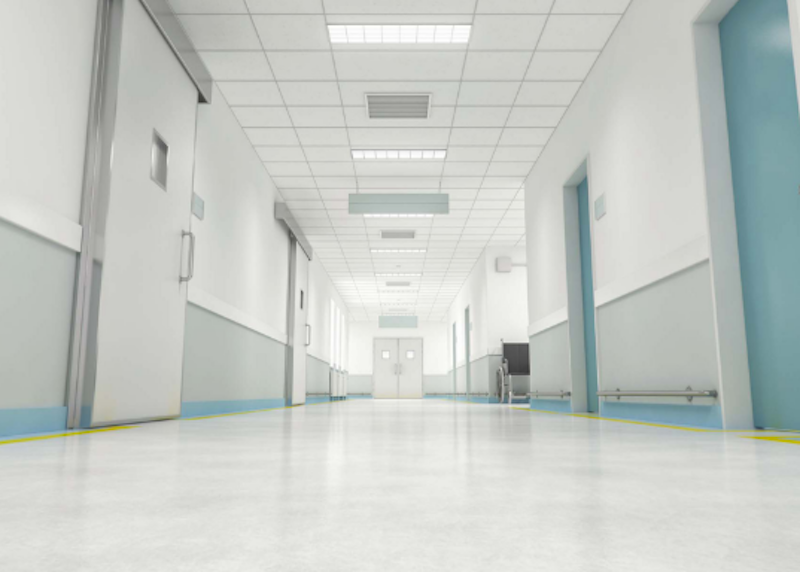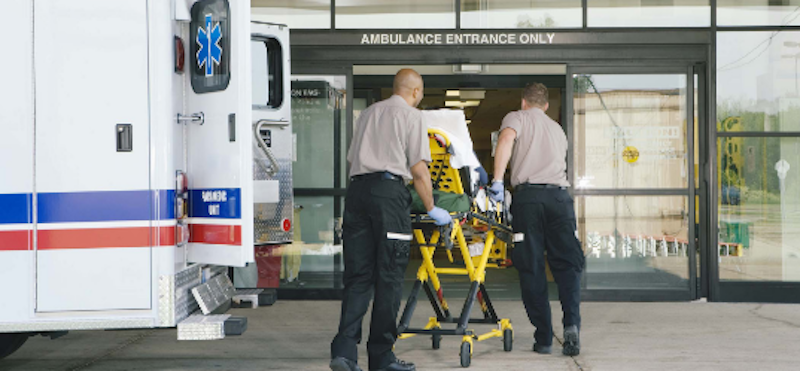Atlanta Falcons fans had much to cheer about in 2016. From Halloween through the stunning conclusion to Super Bowl LI, a strong case can be made that no team in the NFL played better than the Falcons. The real strength of their team was a high-powered offense that seemed at times as though they could score at will. For their many accomplishments, one statistic stands out and that is their performance in the Red Zone.
On a one hundred yard football field, teams are said to enter the Red Zone when they get to (or beyond) the opposing team’s 20-yard line. Good offensive teams can go up and down the field but entering the Red Zone can sometimes seem like entering another zone made famous by Rod Serling where the defense stiffens and strange things happen. Ultimately, offensive teams are judged by their ability to score and teams that routinely convert Red Zone opportunities into touchdowns are tough to beat. In 2016, the Atlanta Falcons converted nearly 3 out of every 4 Red Zone opportunities into touchdowns and were the best in the league at finishing strong and getting into the end zone.
Facility Activation is a lot like operating in the Red Zone. Project teams work for years marching down the field to ultimately arrive at the last few months where myriad final preparations must all come together to operationalize and occupy the new facility. Operating poorly in the project “Red Zone” can cause headaches for your staff, patients and visitors. Proper planning can assist in avoiding pitfalls and, not surprisingly, there is a cost associated with the execution of this phase.
Understanding the costs specifically related to activation is one of the keys to successfully occupying the new space you’ve worked so hard to create. Last month’s CBRE Healthcare Perspective shared the basics of developing a Total Project Budget. It was brought to our attention that we had shortchanged one of the most important components of the master budget – the cost of activating a new facility. So, without further ado and with great apologies to mourning Falcons fans let’s walk through some Facility Activation Budget considerations.

Facility Readiness
Facility Readiness Activities encompass a broad range of tasks that basically cover everything a contractor does not do. Imagine what it would look like if you walked into your new facility once the contractor had completed their scope of work but before anything else had been done. Your image is most likely a bare unfurnished room without artwork or equipment. Supply rooms lack supplies and your laptop is ineffective due to the absence of a wireless network. You look for directional signage to lead you through the facility but none has been installed. Reaching for a phone is pointless as they don’t exist and even if they did, there would be no service. Your badge doesn’t open any secured doors because although the security system is active, the new access points are not programmed into your campus security system. In short – you are so close to the goal line you can see, taste and feel it, but there is still more work that needs to be done to cross that line.
With few if any exceptions, these items must be accounted for in your project plan and budget as they are not optional and are commonly capitalized as part of the overall project cost. Typically, these costs are included indistinct budgets for furniture, signage or medical equipment. Technology budgets often include costs for outside assistance installing a new network(or connecting to an existing one) and imaging and deploying new phones and computers. Exactly where you budget for facility readiness costs is less important than ensuring that you actually account for them. Ask yourself the following key questions:
- What is the contractor not providing and who will provide each of those items?
- Who will install them and ensure that they are operational?
- Are these costs part of the project budget or part of the future operational budget?
Operational Readiness Activities
While Facility Readiness ensures your building is ready for staff and patients, Operational Readiness ensures your staff is ready to work in the building. Tasks include training and orienting staff to the new work flows and may involve dedicated “day in the life” simulation sessions. It is much better to identify “what happened to the crash cart” in a training session as opposed to a real-life emergency. In addition, new equipment may require additional knowledge or skills that don’t currently exist. Brochures or kiosks should be used to assist visitors with new wayfinding. Regulatory approvals and licenses must be obtained or updated. Policies and procedures need to be updated to reflect the new physical space as well as new operational processes that are being implemented in the space.
The vast majority of this work is performed by your staff and their direct leaders. It may come as no surprise that these men and women already have a day job. Consider how you will account for lost productive time while staff are working on not only caring for patients but also preparing to work in a new place. Overtime costs are likely to spike as you approach move day. Many of these costs are often funded out of the organization’s operational budget and are not capitalized as part of the project cost. As you reflect on these issues, ask yourself a few key questions:
- What does the staff need to provide safe and effective care in the new environment?
- How will we ensure that current operations are not negatively impacted during this transition?
- What are the costs associated and how will they be accounted for?

Patient Relocation
Ultimately, we build new healthcare facilities for patients and their families. This is what it’s all about. Moving patients, families and their belongings from one facility to the next is a planning and preparation exercise unto itself. The reality is that healthcare organizations transport patients every day, all day. The main differences when moving to a new facility are the volume of moves, the newness of the situation and the fact that, for a period of time, you need to operate two facilities at once. Great care and detailed planning is mandatory to turn the patient move process into a seamless, safe and low stress event.
Added costs come in a variety of forms. Extra staff are likely needed to facilitate transport along with care in both the new and old facilities. Depending on the distance between facilities and the types of patients being moved, transport vehicles may need to be contracted. Local police often assist in enhancing security or providing for traffic control at busy intersections along the vehicular move route. Local movers may be required to relocate belongings or medical equipment that transfers with a patient. Contractors should be onsite to respond to any emergent issues with the new facility as it comes online. Staff tend to work long hours as move day approaches and, as it turns out, sometimes people like to eat. You may elect to have free food for staff and families as a gesture to all the effort and change people are experiencing. As you plan for your patient move ask yourself the following key questions:
- What is needed to ensure patient care is maintained at the highest level throughout the relocation process?
- What outside resources are needed toaugment our team on this critical day?
- What are the costs associated with theseissues and how will they be accounted for?
Finally
And if all that was not enough, there are a few other things to consider – grand openings, media events, donor events, etc. It’s your time to shine and you spent a ton of money to get there so enjoy it while you can. However, each of these end of project activities also carry costs. The number of events and the cost of those events depends largely on your goals so give some consideration to how and where you want to budget for these items. Hiring of incremental new staff is a major expense that requires careful planning to ensure positions are filled in a timely and effective manner.
In the end, Facility Activation is taking a new space or building and transitioning the ownership from your design and construction team to your staff and patients. Successful execution is a project in and of itself. You should have a project team, a schedule and a budget dedicated to each of these tasks. Leave yourself plenty of time to think through issues and become comfortable with your plan. Do that, and like the Atlanta Falcons, you will score virtually every time.
Related Stories
Healthcare Facilities | Oct 28, 2024
New surgical tower is largest addition to UNC Health campus in Chapel Hill
Construction on UNC Health’s North Carolina Surgical Hospital, the largest addition to the Chapel Hill campus since it was built in 1952, was recently completed. The seven-story, 375,000-sf structure houses 26 operating rooms, four of which are hybrid size to accommodate additional equipment and technology for newly developed procedures.
Healthcare Facilities | Oct 18, 2024
7 design lessons for future-proofing academic medical centers
HOK’s Paul Strohm and Scott Rawlings and Indiana University Health’s Jim Mladucky share strategies for planning and designing academic medical centers that remain impactful for generations to come.
Seismic Design | Oct 17, 2024
Calif. governor signs limited extension to hospital seismic retrofit mandate
Some California hospitals will have three additional years to comply with the state’s seismic retrofit mandate, after Gov. Gavin Newsom signed a bill extending the 2030 deadline.
Healthcare Facilities | Oct 9, 2024
How healthcare operations inform design
Amanda Fisher, Communications Specialist, shares how BWBR's personalized approach and specialized experience can make a meaningful impact to healthcare facilities.
Healthcare Facilities | Oct 8, 2024
Herzog & de Meuron completes Switzerland’s largest children’s hospital
The new University Children’s Hospital Zurich features 114 rooftop patient rooms designed like wooden cottages with their own roofs. The project also includes a research and teaching facility.
Hospital Design Trends | Sep 26, 2024
Hospital benchmarking survey shows sharp rise in hospital energy costs
Grumman|Butkus Associates, a firm of energy efficiency consultants and sustainable design engineers, recently released the results of its 2023 Hospital Energy and Water Benchmarking Survey, focusing on healthcare facilities’ resource usage trends and costs for calendar years 2021 and 2022.
Healthcare Facilities | Sep 19, 2024
New El Paso VA healthcare center includes 47 departments, brain and spinal cord injury treatment services
A new 492,000 sf Veterans Administration ambulatory care facility on the William Beaumont Army Medical Center campus near El Paso, Texas will include 47 medical departments and provide brain and spinal cord injury treatment services. A design-build team of Clark Construction, SmithGroup, and HKS is spearheading the project that recently broke ground with anticipated completion in 2028.
Healthcare Facilities | Sep 9, 2024
Exploring the cutting edge of neuroscience facility design
BWBR Communications Specialist Amanda Fisher shares the unique considerations and challenges of designing neuroscience facilities.
Curtain Wall | Aug 15, 2024
7 steps to investigating curtain wall leaks
It is common for significant curtain wall leakage to involve multiple variables. Therefore, a comprehensive multi-faceted investigation is required to determine the origin of leakage, according to building enclosure consultants Richard Aeck and John A. Rudisill with Rimkus.
Sponsored | Healthcare Facilities | Aug 8, 2024
U.S. healthcare building sector trends and innovations for 2024-2025
As new medicines, treatment regimens, and clinical protocols radically alter the medical world, facilities and building environments in which they take form are similarly evolving rapidly. Innovations and trends related to products, materials, assemblies, and building systems for the U.S. healthcare building sector have opened new avenues for better care delivery. Discussions with leading healthcare architecture, engineering, and construction (AEC) firms and owners-operators offer insights into some of the most promising directions. This course is worth 1.0 AIA/HSW learning unit.

















